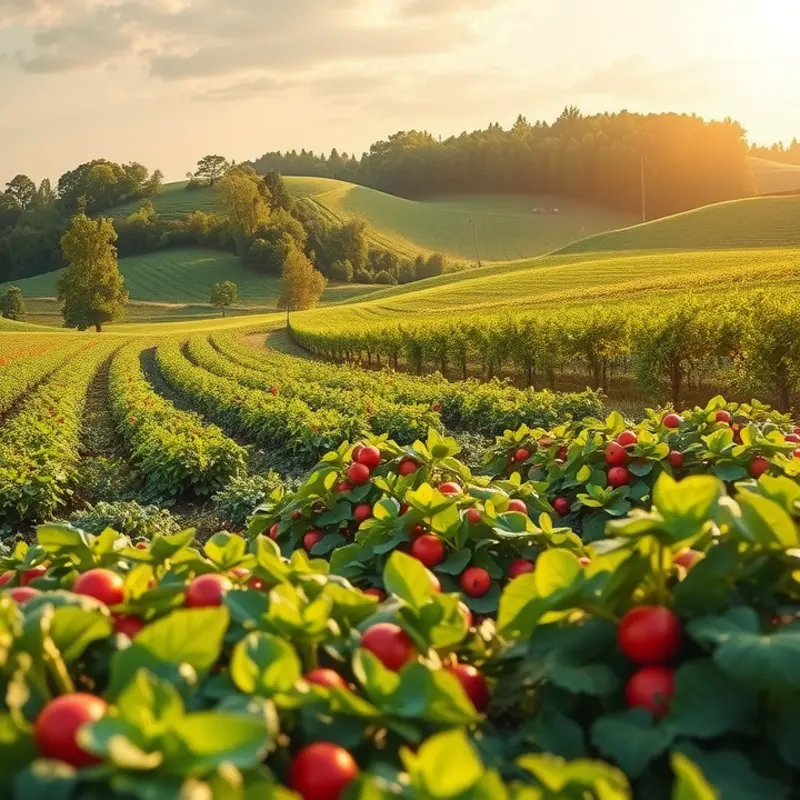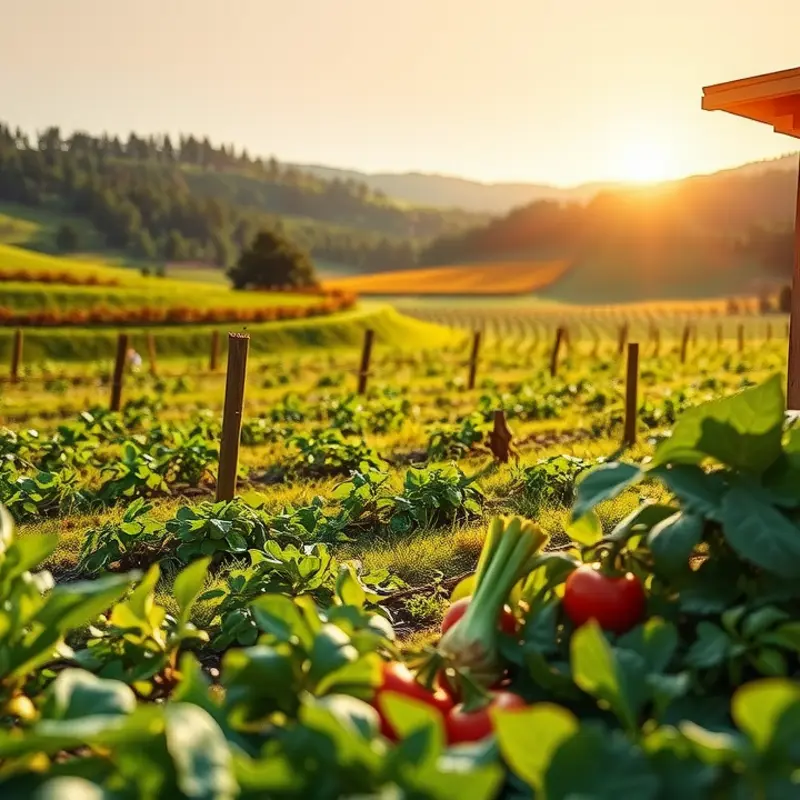Eating locally isn’t just a trend; it’s a powerful choice for those conscious about the environment. By opting for local produce, you contribute to reducing carbon footprints, support local economies, and enjoy fresher food. This conscious decision fosters a sustainable food system, enhancing biodiversity and promoting a healthier planet. Let’s dive into the impactful benefits of eating local, empowering you to make ethical and eco-friendly food choices.
Boosting Sustainability Through Local Choices

Eating local is a profound way to cut down on greenhouse gas emissions. By choosing foods grown nearby, we significantly reduce the miles food travels from field to plate. This minimizes the use of fossil fuels for transportation, effectively decreasing the carbon footprint of our meals. It’s a simple shift in consumer behavior that can have a substantial environmental impact.
One remarkable advantage of local food systems is their contribution to ecological balance. Supporting local farms ensures a diversity of crops, which is essential for maintaining healthy ecosystems. Diverse plant life not only supports a range of wildlife but also improves soil health. Healthy soils capture carbon, further mitigating the effects of climate change. Additionally, they retain water more effectively, reducing the need for irrigation and helping to prevent soil erosion.
Local farming practices often employ sustainable methods that contrast sharply with those used in industrial agriculture. Smaller farms are more likely to use organic farming techniques, avoiding synthetic pesticides and fertilizers. This reduces chemical runoff into local waterways, safeguarding aquatic ecosystems and drinking water supplies.
Biodiversity is another key component supported by local food systems. Large-scale monoculture farms deplete resources from the soil and create environments susceptible to pest infestations. Alternatively, a polyculture approach used by many local farmers promotes biodiversity by planting a variety of crops. This form of agriculture not only enriches the soil but also fosters resilience against pests and diseases.
By preserving traditional agricultural methods and heirloom varieties, local farmers maintain genetic diversity in our food supply. This diversity is a natural safeguard against crop failure due to diseases or climate conditions. It also contributes to richer, more flavorful food. A meal sourced locally tastes fresh and vibrant, thanks to the close proximity and diversity of ingredients.
Participation in a local food movement enhances soil health through the reduction of chemical inputs and the use of cover crops. These practices encourage the presence of beneficial soil organisms that break down organic matter, enriching the soil with nutrients. Improved soil health not only boosts productivity but also enhances the nutritional quality of the produce.
Embracing local food systems intertwines with the practice of mindful eating. Recognizing the source of our food fosters a closer connection to nature and the community. Supporting local growers means investing in environmentally sound practices that promote the sustainability of the earth’s resources.
Understanding and embracing the power of eating locally can inspire broader sustainable practices. As we celebrate farm-to-table dining and local produce markets, the ripple effects touch every component of environmental stewardship—from soil to sky. If you’re interested in fresh and flavorful local fare, consider exploring recipes that highlight the bounty of your community’s harvest. For a taste of how local ingredients can be used creatively, check out this recipe for a delicious and sustainable Mediterranean Chickpea Salad.
Strengthening Community Connections

Eating local offers more than unmatched flavor and freshness—it binds us closer to our neighbors and landscapes. By choosing to buy from local farmers and markets, we inject vitality into local economies, ultimately creating a robust community tapestry woven with interdependence and trust. Each purchase is a reinvestment into the community, fueling job growth and economic stability.
Local food systems excel in stimulating economic activity. When we divert our dollars towards regional produce, we ensure that profits stay within the community, supporting the livelihoods of those around us. Farmers, grocers, and artisans see direct benefits; they, in turn, patronize local services and suppliers, creating a self-sustaining economic loop. This cycle fosters resilience against the whims of global market fluctuations.
Additionally, farmers markets and community-supported agriculture (CSA) initiatives create diverse job opportunities, from farming and logistics to retail and marketing roles. These positions contribute to a richer, multifaceted job market. This diversity nurtures a more inclusive community, with opportunities accessible to various skill sets and educational backgrounds.
The connections forged between consumers and producers transcend financial transactions. Engaging directly with those who grow your food offers insights into agricultural practices and challenges. Dialogue about ecological stewardship and sustainable methodologies enriches both parties. You gain an authentic understanding of the labor and love present in sustainable agriculture, fostering greater appreciation for the meals you relish.
This awareness promotes food security as residents gain a more profound respect for seasonal availability and adapt their diets accordingly. Embracing this shift not only buffers communities against food crises but strengthens their resilience against future uncertainties. Moreover, regions develop unique food profiles, enriching local culture and culinary identity.
Social bonds are another critical factor strengthened by local eating habits. Farmers markets become thriving social hubs, encouraging neighbors to connect, share recipes, and celebrate seasonal harvests. These interactions craft a rich community dynamic filled with shared experiences and mutual support. A simple exchange of a recipe using local zucchini might lead to a discussion about a delicious low-carb alternative like zucchini noodles with avocado pesto, fostering dietary awareness and health consciousness.
Together, these elements—economic uplift, job creation, knowledge sharing, and social interaction—fortify a community, making it adaptable, cohesive, and resilient. When you choose to eat local, you become an integral piece of this communal jigsaw, actively shaping a living network grounded in shared values and collective well-being. Each meal becomes not just sustenance, but a celebration of unity and sustainability.
Final words
Eating local represents a commitment not only to your health but also to the well-being of the planet and your community. By choosing local produce, you’re engaging in sustainable practices that help mitigate climate change, promote biodiversity, and support local economies. You can make a significant difference in your environment and community by simply embracing local food sources. Remember, every bite counts in the journey toward a healthier, more sustainable future. Engage with local farmers, shop at community markets, and encourage others to join you in this impactful lifestyle choice.








